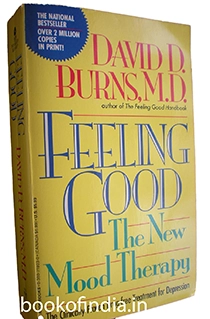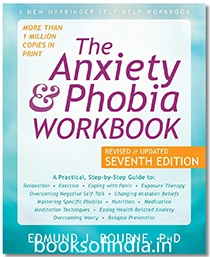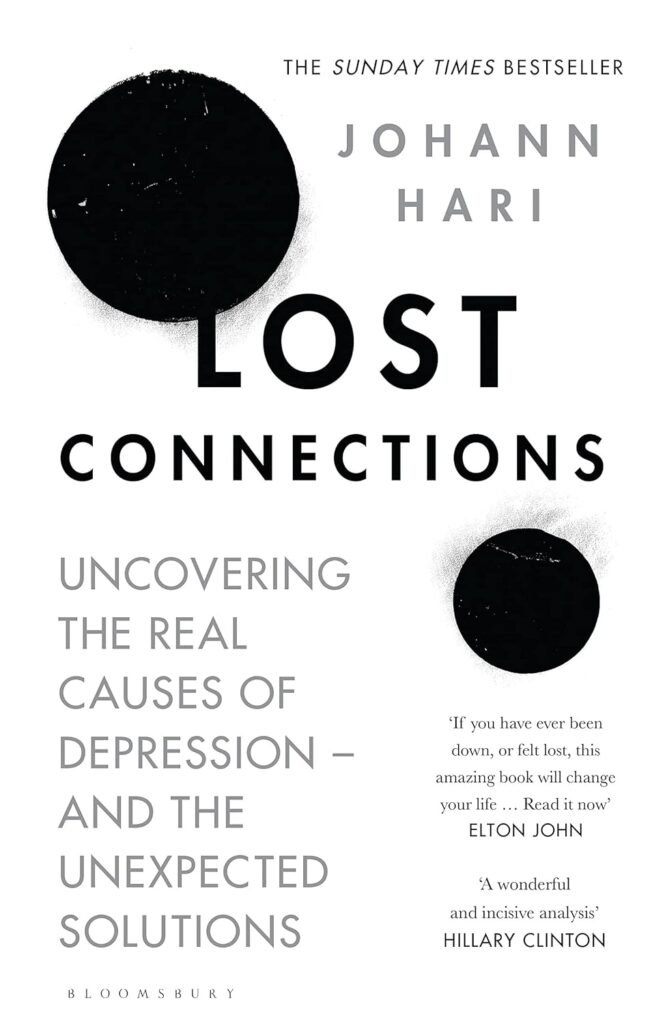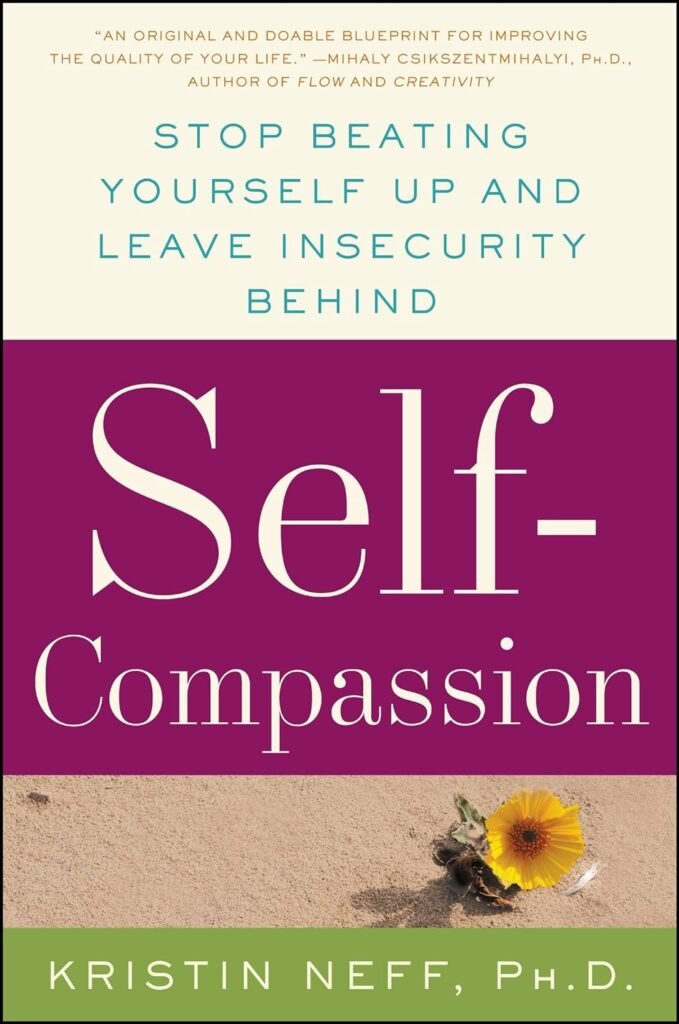5 Best Books for Dealing with Anxiety and Depression
Books have long served as powerful tools to navigate life’s challenges, offering solace, guidance, and practical solutions. For those struggling with anxiety and depression, the right book can provide invaluable insights and support. Below is a selection of five highly recommended books to help readers understand, manage, and overcome these mental health challenges.
1. “Feeling Good: The New Mood Therapy” by Dr. David D. Burns
This book is a cornerstone of cognitive behavioral therapy (CBT), offering scientifically-backed techniques to combat negative thought patterns associated with anxiety and depression.
Cognitive Behavioral Therapy (CBT) is a widely used, evidence-based form of psychotherapy that focuses on identifying and changing negative patterns of thought and behavior. It is commonly used to treat a variety of mental health conditions, including anxiety, depression, post-traumatic stress disorder (PTSD), obsessive-compulsive disorder (OCD), and more. Here’s a breakdown of its key components:
Principles of CBT
- Cognitive Component: Examines and challenges negative or distorted thought patterns (e.g., “I can’t do anything right”).
- Behavioral Component: Focuses on altering behaviors that reinforce negative thinking or contribute to distress (e.g., avoiding social situations).
How CBT Works
- Identifying Triggers: Patients learn to recognize situations or events that lead to negative thoughts or feelings.
- Thought Restructuring: Therapists help patients question the validity of harmful thoughts and replace them with more balanced, constructive ones.
- Behavioral Experiments: Patients engage in activities designed to test beliefs and practice new behaviors.
- Skill Development: CBT equips individuals with coping mechanisms to manage stress, anxiety, and emotional responses.
Techniques Used in CBT
- Journaling: Writing down thoughts to identify patterns.
- Exposure Therapy: Gradual exposure to feared situations to reduce anxiety.
- Relaxation Techniques: Breathing exercises, mindfulness, and progressive muscle relaxation.
- Cognitive Reframing: Learning to view challenges from a different perspective.
Benefits of CBT
- Effective in reducing symptoms of mental health disorders.
- Provides long-term coping skills.
- Adaptable to individual and group settings.
- Can be combined with medication if needed.

Comparison of Behavior vs. Negativity
| Aspect | Behavior | Negativity |
|---|---|---|
| Definition | Actions or reactions of a person in response to a situation or environment. | A pessimistic or critical attitude or mindset. |
| Nature | Can be positive, neutral, or negative. | Always leans toward a pessimistic or adverse outlook. |
| Examples | Helping someone, being rude, staying silent. | Complaining, criticizing, or expecting the worst. |
| Impact on Others | Depends on the type of behavior; can inspire, harm, or be neutral. | Often discourages, demotivates, or spreads tension. |
| Emotional Influence | Influenced by emotions but not always negative. | Driven by negative emotions like anger, fear, or sadness. |
| Changeability | Behavior can be consciously modified. | Negativity requires mindset shifts and emotional management to change. |
| Effect on Self | Shapes personality and relationships. | Leads to stress, anxiety, and a lower sense of well-being. |
- Key Focus
Dr. Burns emphasizes how distorted thinking contributes to mental distress and provides actionable steps to replace harmful thoughts with healthier perspectives. - Why It’s Helpful
The book’s exercises and worksheets encourage readers to actively engage with the material, fostering self-awareness and emotional resilience. It is written in an accessible style, making it suitable for readers without prior psychological knowledge.
2. “The Anxiety and Phobia Workbook” by Dr. Edmund J. Bourne
A practical guide, this workbook offers tools and techniques for managing anxiety and phobias.

Comparison of Anxiety vs. Phobia
| Aspect | Anxiety | Phobia |
|---|---|---|
| Definition | A general feeling of worry or fear about various situations. | An intense, irrational fear of a specific object, situation, or activity. |
| Trigger | Can be general or not clearly identifiable. | Caused by a specific object or situation. |
| Focus | Broad and often about uncertain outcomes. | Narrow and linked to the fear source. |
| Intensity | Varies from mild to severe, but less specific. | Intense fear, often leading to panic. |
| Duration | Long-lasting and can persist without a clear cause. | Episodic, triggered by exposure to the fear source. |
| Examples | Worrying about work, health, or future events. | Fear of heights, spiders, or crowded places. |
| Impact on Life | Can disrupt daily activities and relationships. | Leads to avoidance behavior and limits certain activities. |
| Treatment | Therapy, medication, and stress management. | Therapy, exposure techniques, and relaxation exercises. |
- Key Focus
Dr. Bourne combines relaxation techniques, cognitive restructuring, and exposure therapy exercises to help readers address their specific anxieties. The book also delves into physical health practices such as exercise and nutrition. - Why It’s Helpful
The hands-on approach encourages readers to take control of their mental health. The inclusion of real-life examples and step-by-step strategies makes it a practical resource for individuals seeking immediate relief.
Techniques to Reduce Stress:
| Technique | Description | Implementation | Benefits |
|---|---|---|---|
| Relaxation Techniques | Methods aimed at calming the mind and body to alleviate stress. | – Deep breathing exercises.- Progressive muscle relaxation.- Meditation or mindfulness practices. | – Lowers heart rate.- Reduces muscle tension.- Improves mental clarity and emotional control. |
| Cognitive Restructuring | A psychological process to identify and challenge negative thought patterns, replacing them with positive or balanced thoughts. | – Identifying stress-inducing thoughts.- Analyzing the validity of those thoughts.- Reframing negative beliefs. | – Improves resilience.- Enhances problem-solving ability.- Reduces catastrophic thinking. |
| Exposure Therapy | Gradual exposure to stressors in a controlled environment to reduce fear or anxiety over time. | – Listing specific stress triggers.- Gradually confronting these triggers in safe settings.- Practicing desensitization. | – Builds tolerance to stress.- Reduces avoidance behaviors.- Enhances confidence in managing stressors. |
3. “Lost Connections: Uncovering the Real Causes of Depression – and the Unexpected Solutions” by Johann Hari

This thought-provoking book challenges traditional views of depression and anxiety, exploring their root causes beyond chemical imbalances.
- Key Focus
Hari discusses social and environmental factors, such as disconnection from meaningful work, relationships, and community, as significant contributors to mental health struggles. - Why It’s Helpful
The book provides a broader perspective on mental health, encouraging readers to seek solutions beyond medication. Hari’s personal experiences and interviews with experts add depth and relatability.
4. “Self-Compassion: The Proven Power of Being Kind to Yourself” by Dr. Kristin Neff

This book introduces the concept of self-compassion as a transformative tool for managing anxiety and depression.
Concept of Self-Compassion
Self-compassion is the practice of treating oneself with kindness, understanding, and care during moments of failure, inadequacy, or suffering. Rooted in mindfulness and emotional awareness, self-compassion encourages individuals to approach themselves as they would a close friend, fostering a sense of inner support and resilience.
Components of Self-Compassion
- Self-Kindness
- Involves offering warmth and understanding to oneself rather than harsh criticism or self-judgment.
- Focuses on alleviating personal suffering through a kind and encouraging inner dialogue.
- Common Humanity
- Recognizes that imperfection and struggles are part of the shared human experience.
- Helps to reduce feelings of isolation by understanding that everyone faces challenges and makes mistakes.
- Mindfulness
- Involves being present with one’s emotions without exaggerating or suppressing them.
- Encourages a balanced perspective, allowing individuals to observe their experiences without becoming overwhelmed.
Benefits of Self-Compassion
- Emotional Well-Being
Promotes resilience and reduces feelings of anxiety, stress, and depression. - Improved Relationships
Enhances empathy and understanding in relationships by reducing self-critical tendencies. - Personal Growth
Encourages a growth mindset by reducing fear of failure and increasing motivation. - Physical Health
Lowers stress-related health issues by fostering a healthier emotional state.
How to Cultivate Self-Compassion
- Practice Self-Kindness Daily
Write affirmations or engage in activities that nurture your well-being. - Embrace Imperfections
Reflect on shared human experiences to normalize personal challenges. - Mindfulness Meditation
Develop awareness of your thoughts and emotions without judgment. - Challenge Negative Self-Talk
Reframe self-critical thoughts into constructive and supportive ones.
Misconceptions About Self-Compassion
- It’s Not Self-Pity
Self-compassion involves acknowledging pain without exaggeration. - It’s Not Self-Indulgence
It promotes healthy self-care, not avoiding responsibilities. - It’s Not Narcissism
Self-compassion values self-acceptance while remaining considerate of others.. - Key Focus
Dr. Neff highlights the importance of treating oneself with kindness and understanding, especially during difficult times. She provides exercises to cultivate self-compassion and mindfulness. - Why It’s Helpful
Readers often find relief in shifting their mindset from self-criticism to self-acceptance. The book is filled with actionable advice and heartfelt anecdotes, making it both practical and inspiring.
5. “The Untethered Soul: The Journey Beyond Yourself” by Michael A. Singer

This spiritual book explores the relationship between the mind and self, guiding readers toward inner peace and emotional freedom.
- Key Focus
Singer discusses how attachment to thoughts and emotions creates mental suffering. By learning to observe these experiences without judgment, readers can achieve a sense of detachment and calm. - Why It’s Helpful
The book’s blend of philosophy and practical wisdom makes it a compelling read for those seeking a deeper understanding of their inner world. It offers tools to navigate anxiety and depression by fostering mindfulness and presence.
How Books Help in Coping with Anxiety and Depression
Books serve as more than a source of knowledge—they can transform lives. Below are some ways these resources support mental health:
1. Providing Information and Knowledge
- Books like “Feeling Good” and “The Anxiety and Phobia Workbook” offer evidence-based techniques and insights to manage mental health challenges effectively.
- Self-help books demystify complex psychological concepts, empowering readers to take control of their well-being.
| Aspect | How It Helps |
|---|---|
| Understanding Causes | Explains the root causes, including biological, psychological, and environmental factors. |
| Practical Techniques | Provides actionable strategies to manage symptoms effectively, such as cognitive restructuring or relaxation techniques. |
| Self-Awareness | Helps recognize and reframe negative thought patterns, fostering a positive mindset. |
| Stress Management | Teaches relaxation methods like mindfulness, meditation, and breathing exercises to reduce stress. |
| Empowering Choices | Equips individuals with tools to take control of their mental health through informed decisions. |
| Building Resilience | Offers insights to overcome setbacks and develop emotional strength for long-term well-being. |
2. Inspiring Creativity and Innovation
- Fiction or philosophical works like The Untethered Soul encourage imaginative thinking, helping readers approach problems with fresh perspectives.
- Personal stories and case studies in books foster innovative approaches to life’s challenges.
3. Building Empathy and Understanding
- Memoirs and narrative-style books like Lost Connections connect readers with shared experiences, reducing feelings of isolation.
- These stories foster compassion for oneself and others, paving the way for healing.
4. Developing Critical Thinking and Problem-Solving Skills
- Structured exercises and techniques in books like The Anxiety and Phobia Workbook enhance problem-solving abilities.
- Readers learn to identify, analyze, and tackle the root causes of their mental health struggles.
5. Offering Emotional Support and Comfort
- Books on self-compassion provide comfort, reminding readers they are not alone in their journey.
- Through relatable content, these resources nurture hope and resilience.
Conclusion
Dealing with anxiety and depression is a deeply personal journey, yet books can provide invaluable guidance, support, and practical tools. From scientific strategies to spiritual insights, the five books listed above cater to diverse needs and perspectives. By engaging with these resources, individuals can gain the knowledge, understanding, and emotional strength necessary to navigate their mental health challenges. Whether seeking immediate relief or a deeper sense of purpose, these books can illuminate the path to recovery and inner peace.
